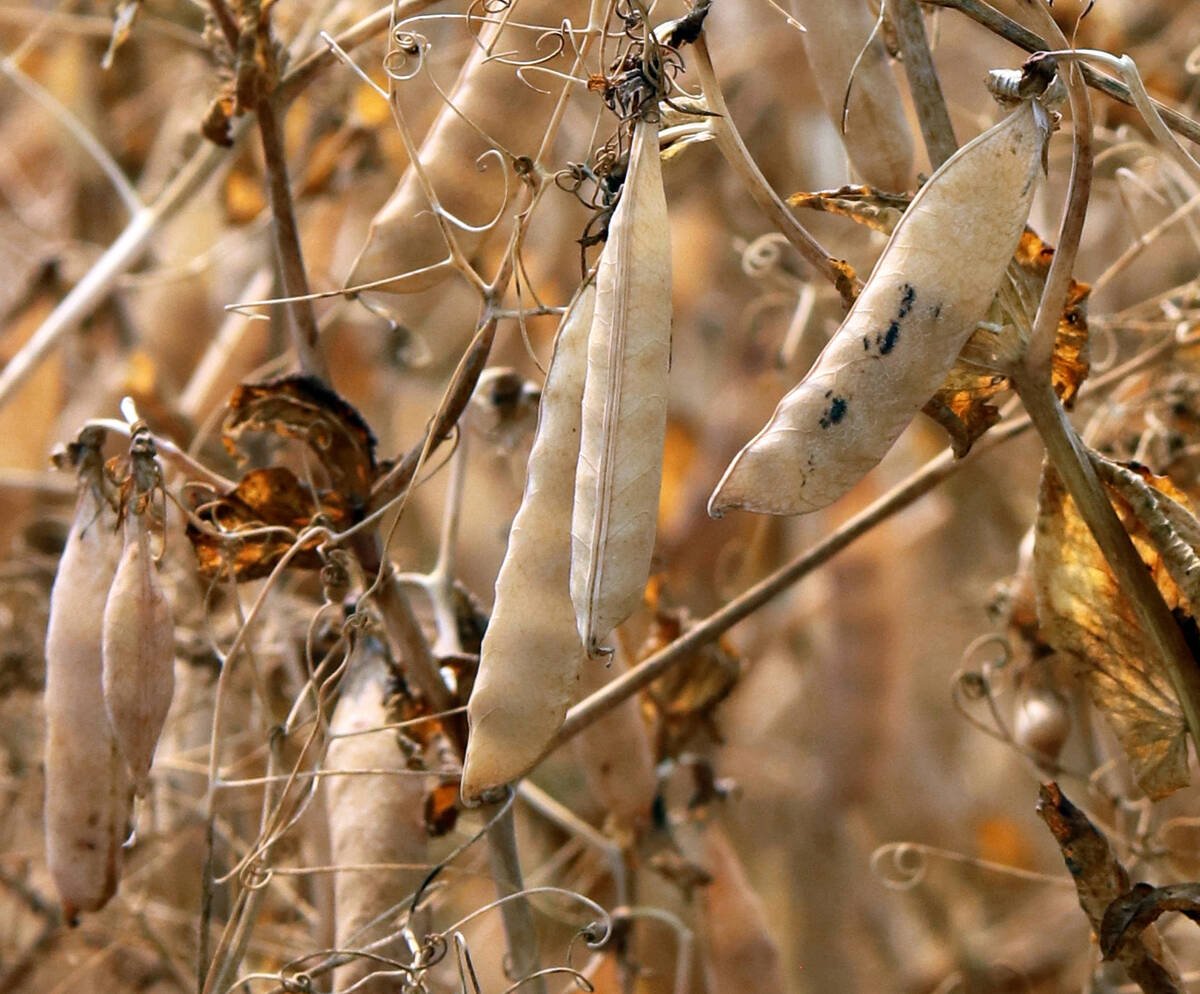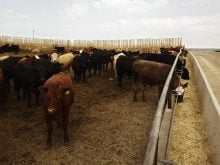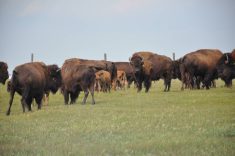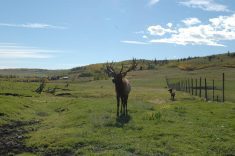PICTURE BUTTE, Alta. – A dog is a sheep’s best friend when it’s in the pasture, says Phil Merrill of Alberta Agriculture.
“Your best method for coyote control in Alberta is your guard dog.”
Merrill explained various methods of predator control during the annual Sheepstakes Show in Picture Butte on June 2.
Keeping ahead of coyotes requires vigilance.
“Coyotes will outsmart your dog eventually and start taking lambs or ewes when the dogs get tired.”
Nevertheless, a good dog is a sound investment.
Read Also

Trump’s tariffs take their toll on U.S. producers
U.S. farmers say Trump’s tariffs have been devastating for growers in that country.
Guard dogs don’t need to be trained to protect sheep, but they do need behavior training. They must not be treated as pets and should live and eat with the sheep.
Merrill suggested neutering or spaying the dogs to keep them under control and prevent problems with other dogs.
However, dogs do not come with a 100 percent guarantee, so additional means may be needed to get rid of problem coyotes.
“Putting anything different with your flock will help,” he said.
Some people successfully use llamas and donkeys.
However, coyotes soon learn llamas can’t hurt them and may even attack the guard animals.
Donkeys can chase away problem dogs, foxes, and coyotes. They should be raised with the flock so they think they are part of the group.
“Donkeys don’t guard the sheep. They just don’t like canines,” Merrill said.
They eat the same feed as sheep and poison can be safely placed in the pasture.
Merrill had other tips for protecting livestock:
- Don’t leave vulnerable lambs in a pasture.
“Every coyote that is hungry and gets over its timidity will learn to go after sheep.”
- Carcass cleanup is important. Remove them before coyotes see them as a food source.
- If possible, sheep should be penned close to home at night. Coyotes tend to lurk on the periphery and will not come too close to a farmyard.
- Properly built electric fences are effective. However, coyotes may learn to dig underneath if they are placed on rough ground. Snares could be placed along a fence line where they have been digging.
- Search out dens in the spring. They are often abandoned badger holes in secluded areas, so they may be hard to find. Coyote bitches may travel up to 13 kilometres from their dens in search of food.
Quick action is needed if a den is discovered, because the female will move the pups if it thinks someone has invaded its space. Change the appearance of the den in some way so the female stays away. Pups can be killed in the den with either gas or commercial compounds.
To find a den, use hand-held callers that sound like a rabbit in distress or tapes of coyotes howling and barking. This may bring out a curious animal. However, repetitive sounds seem to alert coyotes that a tape is being used.
Once the den is found, pay attention to the wind direction and don’t stand in full view. A coyote will not stand and wait to be shot.
Poisons are a last resort. Tablets placed in bait are available, but cannot be used around dogs. It is a good idea to place the tablet in a carcass already killed by a coyote so it will come back. Other poisons are available, but may not be as effective.















